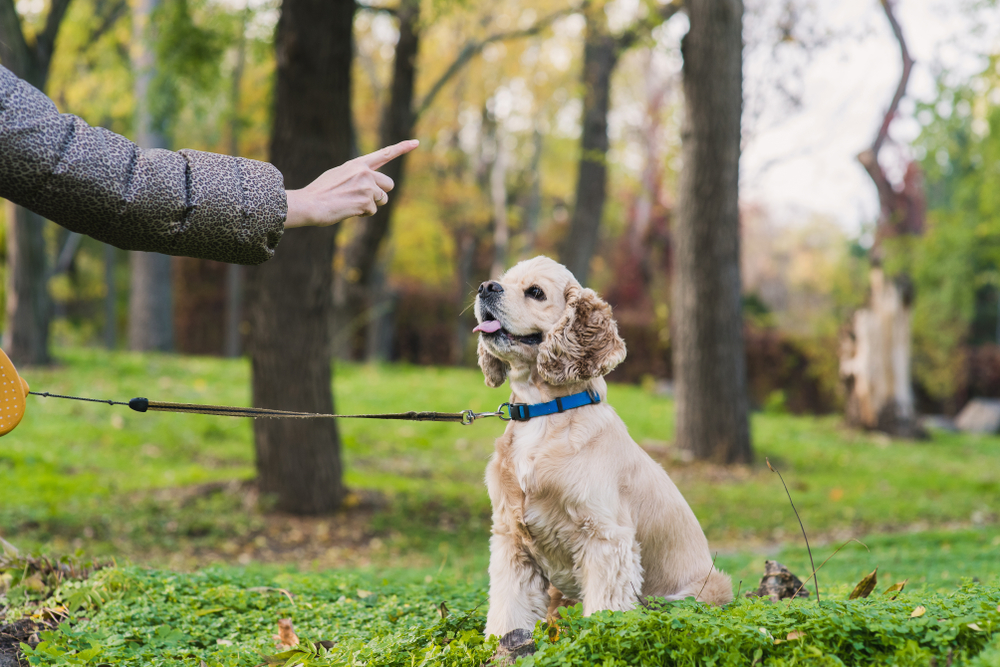Training for puppies tailored to your dog’s temperament.
Training for puppies tailored to your dog’s temperament.
Blog Article
Master Necessary Commands: Effective Dog Training Facilitated
Reliable pet dog training is an essential facet of accountable pet ownership, and mastering essential commands serves as the structure for an unified relationship in between handler and pet. Comprehending the subtleties of canine habits and the training procedure is crucial; however, the trip to a well-trained pet dog frequently offers unanticipated hurdles that call for interest.
Comprehending Your Dog's Actions
To comprehend the subtleties of reliable pet dog training, it is necessary to damage down and evaluate your pet dog's behavior. Dog training. Understanding the inspirations behind your dog's actions is critical; behaviors can originate from instinct, worry, enjoyment, or a need for attention. By observing your pet dog in numerous situations, you can determine patterns that might show underlying emotions or needs
As an example, a canine that barks exceedingly might be sharing boredom, stress and anxiety, or a need for social communication. Conversely, a pet dog that exhibits damaging actions may be looking for stimulation or relief from anxiety. Identifying these triggers allows you to tailor your training technique effectively.
Furthermore, it is important to think about the pet dog's type features, as they can affect actions significantly. Some breeds are predisposed to specific characteristics, such as herding or protecting impulses, which can impact their reactions to specific stimuli.
Lastly, consistency in your responses to your dog's actions cultivates a far better understanding in between you and your pet dog. This common understanding is fundamental for developing count on and assisting in an efficient training procedure that supports both behavior modification and positive reinforcement.
Important Commands to Teach
Teaching essential commands is an essential aspect of reliable pet dog training, giving the structure for a well-behaved and responsive animal. These commands not only boost communication between the proprietor and the pet dog yet likewise make sure safety in numerous atmospheres.
The most crucial commands consist of "Sit," which encourages your dog to continue to be stationary and tranquil; "Remain," which reinforces the concept of remaining in one location until launched; and "Come," which is important for remembering your pet dog from possibly hazardous situations. "Down" shows canines to exist down, promoting leisure and control, while "Leave it" helps protect against canines from grabbing unsafe or unwanted things.
" Heel" is another vital command that encourages your pet dog to walk carefully close to you, improving chain good manners. Finally, "No" offers as a vital boundary-setting command, aiding to fix unwanted behaviors.
Training Methods for Success
Reliable pet dog training relies heavily on using a selection of strategies that accommodate both the canine's discovering design and the owner's training objectives. One vital strategy declares support, which entails satisfying desired habits with deals with, praise, or play. This technique urges the dog to repeat those actions, cultivating a strong bond between owner and animal.

An additional efficient strategy is remote control training, where an unique sound, made by a remote control, marks the specific minute a pet performs a preferred action. This precise timing helps pets link the habits with the reward, boosting their understanding.
Consistency is important in all training methods. Establishing clear commands and keeping the exact same cues aids the pet dog grasp assumptions extra rapidly. In addition, brief, engaging training sessions protect against monotony and increase retention.
Integrating socialization opportunities is additionally crucial. Exposing pets to different settings, people, and other animals helps them create confidence and adaptability.
Finally, patience plays a substantial role in successful training - Dog training. Each dog discovers at their own speed, and comprehending this can bring about a much more enjoyable training experience for both the proprietor and the canine. Applying these methods will certainly set the foundation for reliable canine training
Usual Difficulties and Solutions
In spite of the finest training methods, canine owners typically come across typical obstacles that can prevent progress. When family participants make use of various commands for the very same habits, it perplexes the pet, leading to irregular actions.

Additionally, some pets might show stubbornness or lack inspiration. This can usually be resolved by integrating positive support methods, such as treats or praise, to urge wanted behaviors. Customizing incentives to Dog training near me what your pet dog locates most encouraging can significantly boost their engagement.
Lastly, anxiety or anxiety can hamper progress in training. Identifying signs of stress and anxiety and readjusting the training speed appropriately is essential. Utilizing steady exposure to been afraid stimuli can help develop self-confidence in time, facilitating an extra reliable training experience.
Maintaining Consistency and Persistence
Uniformity and persistence are paramount in canine training, as they form the structure for accomplishing long-term behavioral modifications. Pet dogs thrive on regular and clear expectations; hence, maintaining a constant approach in commands, benefits, and modifications is necessary.
Similarly vital is the function of patience. Training a pet is not an instant procedure; it requires time and repetition. Pets, just like people, have varying discovering speeds and might not grasp commands instantly. Trainers need to identify this and remain tranquil, supplying support instead than stress. Positive support plays an essential role here, gratifying desired habits and helping to promote a trusting partnership between the dog and instructor.
Final Thought
Grasping vital commands is basic to reliable dog training, fostering improved communication and strengthening positive actions. The application of favorable support methods, coupled with uniformity and persistence, considerably improves the training experience for both the pet and trainer. Attending to common difficulties with practical options additionally supports the training process. Eventually, a trained dog not just displays etiquette however likewise establishes confidence, contributing to an unified relationship in between the dog and its proprietor.
Report this page